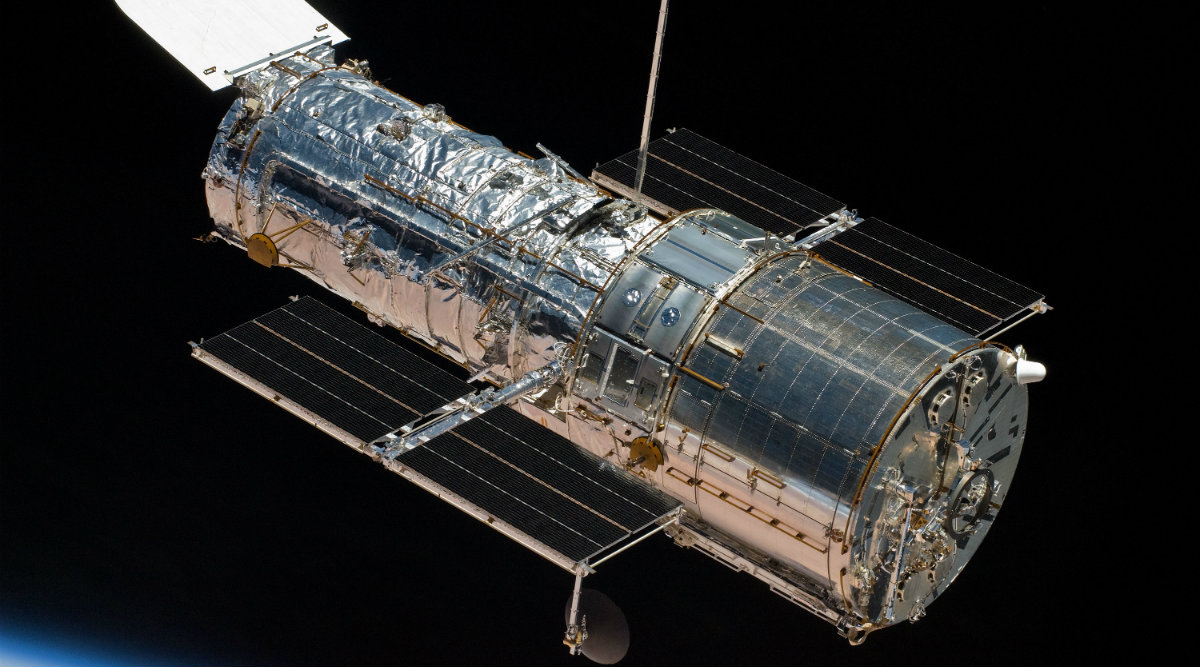 NASA Hubble telescope (Image: NASA)
NASA Hubble telescope (Image: NASA)The mysterious world of space has still not been deciphered by the gaze of human beings on Earth. As a matter of fact, NASA in its consistent efforts, developed the Hubble telescope in the 1990s to observe eye-catching happenings in the universe and since then for every second, it’s doing that quite persistently.
Recently, the US-based space agency announced that it can showcase which new galaxy it captured, what unusual did it notice about our stars, solar system and planets and what patterns of ionized-gases it observed, on any specific day. So users can use the new tool to check what Hubble captured on your birthday, but for any specific year.
Check out the too here
We decided to take a random day of every month over the decades to list the cosmic mayhem in the space.
January 26, 2016
The telescope, on this day, captured the disintegration of an ancient comet 332P/Ikeya-Murakami while it approaches towards the sun. It was one of the clearest views of a breaking icy comet.
February 15, 1998
This was an astounding capture as the telescope snapped the collusion of two dwarf galaxies one of which is I Zwicky 18 with another one on its upper right. This led to the formation of a new star.
March 6, 2012
On this day, a disc surrounding a star ‘Beta Pictoris’, which was discovered in 1984, was found to be constituted by two planets, light-scattering dust and debris.
April 10, 1999
Hubble captured some colourful patterns of gases in black hole powered galaxy which is known as ‘Circinus Galaxy’. These gases depicted a cauldron of vapours, concentrated in two disks of the galaxy.
May 23, 2013
This day marked the capturing of ‘Galaxy Cluster Abell 2744’ which is 3.5 billion light-years away and has several clusters of small galaxies in it. It also poses a strong gravitational field which acts as a lens to reflect the light of almost 3,000 background galaxies.
June 25, 2011
The telescope took a snapshot of Neptune which is the most distant planet. The image of the planet revealed the formation of high-altitude clouds composing of methane ice crystals.
July 11, 2000
On this day, the collision between two galaxies UGC 06471 and UGC 06472 which are 145 million light-years away from the earth was captured. The collision eventually led to the formation of a larger galaxy.
August 25, 2017
Triangulum Galaxy was snapped depicting the specific areas of star birth with a bright blue light spreading across the galaxy in beautiful nebulas of hot gas.
September 23, 2010
Hubble clicked the picture of ‘Galaxy ESO 243-49, which had a medium-sized black hole. The 20,000 suns sized black hole was positioned on a glacial plane of the galaxy.
October 19, 2014
The telescope captured an encounter of a comet named C/2013 A1 with Mars. The ‘Comet Siding Spring’ passed with a distance of just 87,000 miles to that of Mars.
November 25, 2014
‘Gum 29’ a vibrant stellar being ground, which is 20,000 light-years away, consisting of a giant cluster of 3,000 stars was captured by the telescope. This behemoth cluster of stars is called ‘Westerlund 2’.
December 7, 1995
The snapshot of ‘Southern Ring Nebula’ was recorded which did show two stars – a bright white star and a fainter dull star at the centre of the nebula where the dull star was indeed creating the whole nebula.
Express Tech is now on Telegram. Click here to join our channel (@expresstechie) and stay updated with the latest tech news
📣 The Indian Express is now on Telegram. Click here to join our channel (@indianexpress) and stay updated with the latest headlines
For all the latest Technology News, download Indian Express App.